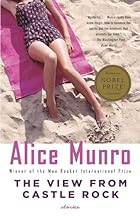My summer reading continues apace, as I work through my July book stack. I finished two books in the past week, which is unusual for me. But one was really short and the other made for quick reading. Here’s a run-down…
 The Sweet Dove Died, by Barbara Pym
The Sweet Dove Died, by Barbara Pym
This novel centers on three friends: Humphrey, James, and Leonora. James is Humphrey’s nephew, and an assistant in his antique shop. Leonora is a middle-aged woman — younger than Humphrey and older than James — and enjoys flirtatious relationships with both men. She expects their attention, and enjoys receiving little gifts, without having to give much in return. She arranges for James to rent a flat in her house, and enjoys their “platonic living together” arrangement. But when James’ attentions stray to younger and possibly more compatible partners, she becomes jealous and tries to manipulate events in her favor. All the while poor Humphrey sits on the sidelines, a steady reliable friend with desires to take the relationship further, but Leonora is oblivious to this opportunity.
As you might expect, the story is bittersweet. Pym lightens the mood with supporting characters like Leonora’s “crazy cat lady” friend Liz, and Ned, a young American with designs on James. Although the novel was published in 1978, the characters and story seemed more “vintage 1950s” with the odd references to sex and cannabis thrown in to modernize. Still, I always enjoy Pym’s work and found this a pleasurable comfort read.
The title comes from a poem by John Keats:
I HAD a dove and the sweet dove died;
And I have thought it died of grieving:
O, what could it grieve for? Its feet were tied,
With a silken thread of my own hand’s weaving;
Sweet little red feet! why should you die –
Why should you leave me, sweet bird! why?
You liv’d alone in the forest-tree,
Why, pretty thing! would you not live with me?
I kiss’d you oft and gave you white peas;
Why not live sweetly, as in the green trees?

 Where’d You Go, Bernadette?, by Maria Semple
Where’d You Go, Bernadette?, by Maria Semple
Bernadette Fox was once an award-winning architect, and now lives in Seattle with her husband Elgin Branch and their daughter, Bee. Bernadette gave up her work when Elgin took a position with Microsoft; he is widely recognized as a genius. Bernadette has become a recluse, leaving her house only when absolutely necessary and relying on an India-based “personal assistant” to handle most of her administrative responsibilities. She has an antagonistic relationship with other school parents, who she refers to as “gnats.” Bee started life with a serious heart condition and is now a precocious eight-grader at a second-tier private school. To celebrate Bee’s upcoming graduation, the family plans a trip to Antarctica over the Christmas holiday. But as the date approaches, Bernadette disappears, and a more complex story emerges.
The story is told through a series of emails, letters, and other documents. Bernadette initially comes across as just quirky, but deeper issues are soon revealed that challenge the family’s overall stability. The “gnats” also prove to be more complex characters than they seem, showing there is always more than one side to any story. The central conflict and its resolution bordered on the preposterous at times, but the light writing style was misleading. Beneath the surface is a novel with surprising emotional impact.
















